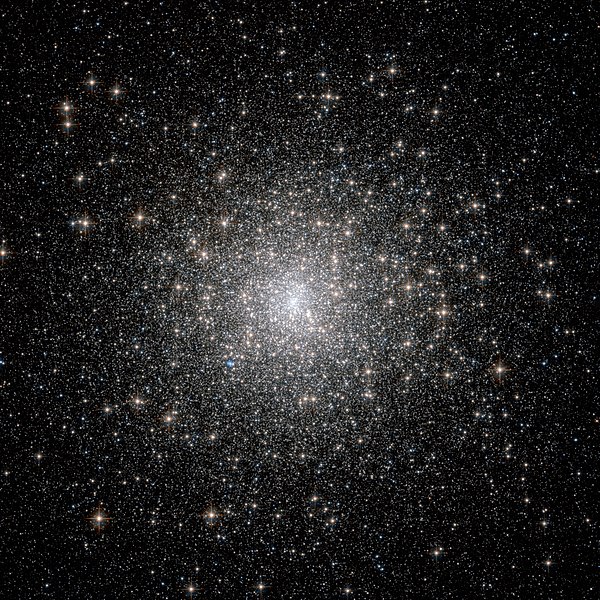Fail:Messier 15 HST.jpg
Penampilan

Saiz pralihat ini: 600 × 600 piksel. Leraian-leraian lain: 240 × 240 piksel | 480 × 480 piksel | 768 × 768 piksel | 1,024 × 1,024 piksel | 2,048 × 2,048 piksel | 4,089 × 4,089 piksel.
Fail asli (4,089 × 4,089 piksel, saiz fail: 4.55 MB, jenis MIME: image/jpeg)
Sejarah fail
Klik pada tarikh/waktu untuk melihat rupa fail tersebut pada waktu itu.
| Tarikh/Waktu | Gambar kenit | Ukuran | Pengguna | Komen | |
|---|---|---|---|---|---|
| semasa | 09:42, 4 Mei 2011 |  | 4,089 × 4,089 (4.55 MB) | Originalwana | higher res |
| 21:12, 18 Februari 2011 |  | 1,280 × 1,280 (721 KB) | Jmencisom | {{Information |Description ={{en|1=The dazzling stars in Messier 15 look fresh and new in this image from the NASA/Hubble Space Telescope, but they are actually all roughly 13 billion years old, making them some of the most ancient objects in the Unive |
Penggunaan fail
Laman berikut menggunakan fail ini:
Penggunaan fail sejagat
Fail ini digunakan oleh wiki-wiki lain yang berikut:
- Penggunaan di af.wikipedia.org
- Penggunaan di ca.wikipedia.org
- Penggunaan di ce.wikipedia.org
- Penggunaan di cs.wikipedia.org
- Penggunaan di de.wikipedia.org
- Penggunaan di diq.wikipedia.org
- Penggunaan di en.wikipedia.org
- Penggunaan di en.wikiversity.org
- Penggunaan di eo.wikipedia.org
- Penggunaan di eu.wikipedia.org
- Penggunaan di fr.wikipedia.org
- Penggunaan di gd.wikipedia.org
- Penggunaan di id.wikipedia.org
- Penggunaan di it.wikipedia.org
- Penggunaan di it.wikibooks.org
- Penggunaan di ja.wikipedia.org
- Penggunaan di ko.wikipedia.org
- Penggunaan di mg.wikipedia.org
- Penggunaan di ml.wikipedia.org
- Penggunaan di nds.wikipedia.org
- Penggunaan di nl.wikipedia.org
- Penggunaan di no.wikipedia.org
- Penggunaan di pl.wikipedia.org
- Penggunaan di pt.wikipedia.org
- Penggunaan di ru.wikipedia.org
- Penggunaan di simple.wikipedia.org
- Penggunaan di sl.wikipedia.org
- Penggunaan di tr.wikipedia.org
- Penggunaan di tt.wikipedia.org
- Penggunaan di uk.wikipedia.org
- Penggunaan di www.wikidata.org
- Penggunaan di zh-yue.wikipedia.org
- Penggunaan di zh.wikipedia.org
